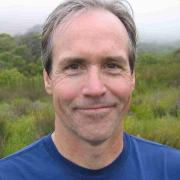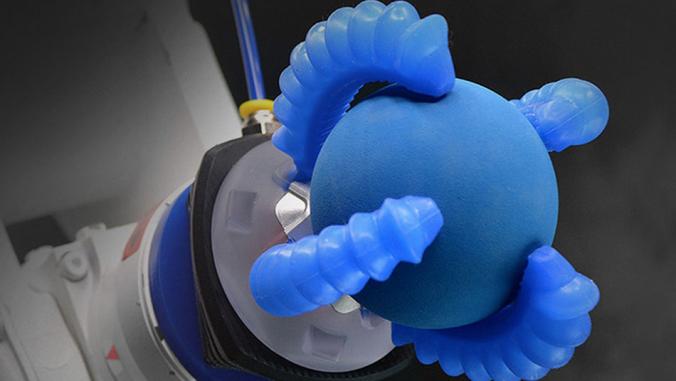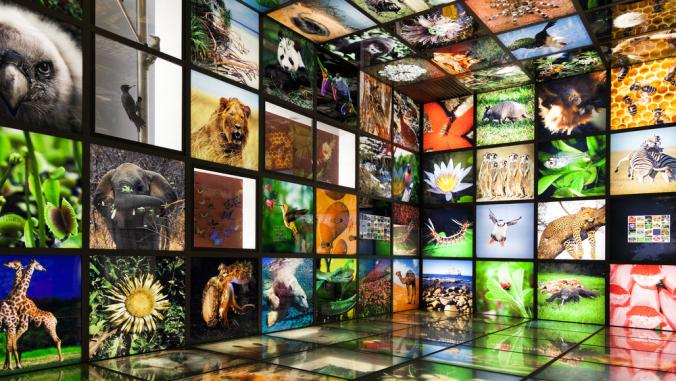Why Flying Monkeys Don't Rule the World: Recognizing the Ecological Context of Design
<p>There is a resuscitated movement to judge our built work by the wider ecological context into which it is put. To optimize its beneficial effect rather than maximize its financial profit (or simply minimize its environmental harm). Optimizing our resources and decisions within the limits of our natural world is not merely wise or clever or noble; it's a requirement for our survival. <br /> </p>

Flying monkeys - WikiMedia Commons
Do you remember the scene in the Wizard of Oz when Dorothy and Toto are kidnapped by an army of winged capuchin monkeys? Scary stuff, but why? Because (a) there were lots of them, (b) they were organized, and (c) they had an advantage over other armies: They could fly. More importantly, they could fly and use their hands.
It's this last point that makes the flying monkeys so distinctly fantastic. In the evolution of vertebrates, we simply do not see this phenomenon…ever. If you want to really fly by flapping a limb to get lift and thrust, you have to give up your hands. Bat or bird, no matter how fast or furious, they still can't type a text message. Would you give up your hands in order to fly? “Well, I am a bit attached…” you might say, and I would agree: Stick with the hands and leave off the dreams of soaring. But we do dream, don't we?
Luckily, animals have been spared this philosophical conundrum on the long slog up from the slime. Evolution has decided for us. Slowly, over millions of years, different creatures have developed highly specialized appendages that are modifications of what we chauvinistically call “hands." The bat is a perfect example of a particular survival solution that doesn't work for everybody. Just imagine turning a faucet with those long creepy stick fingers with the flaps of skin between.
Suppose, however, that there was a long lost branch of the evolutionary tree that didn't require its members to give up massage work for a little air time. Suppose, further, that eventually some of them found employment with one Wicked Witch, West. Talk about disruptive technologies! Think about it: the brains of a monkey…the wings of a bat…the hands of a surgeon. You get my point: Advantage. It's a winged advantage, of course, that will allow Oswald to gather more food, find the girlfriend of his dreams, and sire a lot of healthy little winged primates. They, of course, will inherit his surgeon hands and their mom's cute little prehensile tail. Before you know it, their cross-generational refinements will enable them to form armies and sign contracts with megalomaniacs and MGM.
Too good to be true for our contestants in the evolutionary most-likely-to-succeed category? Probably. If the aphorism that nature tends to optimize rather than maximize is true, then I expect we would see compromises at every developmental juncture. Each random path taken would preclude another. “Gee, that long tail sure gets in the way of tight flying turns and, honey, do we really need these big wings if we only visit your mother once a year?” And, “I know junior keeps getting beat up by those big apes at school, but our family has always kept our flying weight down.” The demands of biological survival, as well as the realities of plain physics, mathematical probability and time, seem to level the field in this marvelous spinning dance of natural selection and evolution.
Are there cases, though, when an animal species got to have it both ways? Could the benefits and costs of flying be reconciled with the benefits and costs of manual dexterity? What forms would be the result?
The closest thing to a flying primate exists within the rainforests of Southeast Asia. It's called the flying lemur, or colugos, but it really doesn't fly, and it isn't a lemur, either, although it is the closest link to that end of the primate order. It's a nocturnal plant-eating mammal about 16 inches long that has a wide skin flap, called a patagium, from fingertips to toes and from toes to tail. It has completely maximized the possible surface area of this skin flap (even fingers and toes have webs), but it still can only glide between trees with this flap, not fly. Furthermore, although it has retained the use of its thumb-less paws, it is reputed to be a very bad climber, awkwardly lurching up trees, impeded by its permanent zoot suit.
It is a most imperfect example and it appears that phylogeny and the environment have conspired against a large dexterous flyer-and it's a good thing for us! That kind of oversized advantage might have eclipsed all the evolutionary investment we have made in larger brains, clever hands and bipedal locomotion. And lest we mock the colugos, consider that it has passed one very important test: It's alive. In the particular environment in which it lives, its adequate combination of traits has enabled it to pass down its DNA to new generations and coexist with its neighbors without destroying its own habitat. I'm not so sure the same could be said of our cinematic monkeys…or of us.
Yes, perhaps we are the sole animal that got to have it both ways, or so we thought. Now we know better and realize that, despite all our advantages, in the larger scheme of things, we've made a mess of it. Unfortunately, I am not so sure that we realize that our cleverness alone (which got us here in the first place) isn't enough to put things right.
Happily, there is a resuscitated movement to judge our built work by the wider ecological context into which it is put. To optimize its beneficial effect, if you will, rather than maximize its financial profit (or simply minimize its environmental harm). Regenerative design, ecodistricts, and ecosystem services valuation are some of the various threads of this movement.
A regenerative design project might include features that contribute to the replacement of benefits we had received from the supplanted natural systems: water supply and filtering, for instance. It might also have features that rejuvenate or restore the mechanisms for those benefits; for example, daylighted streams, restored wetlands, or replanted native grasses on a roof.
Ecodistricts, such as those being studied by the Portland + Oregon Sustainability Institute, are neighborhoods that are planned for a greater degree of self-sufficiency, using the advantage of scale and diversity to solve problems like waste disposal and energy generation. If one can often solve a problem by expanding it, these districts are a case in point: Interrelationships that don't exist in single buildings provide opportunities for energy flow paths and material cycles that multiply value. Conversely, locality and control at this scale are possible advantages over highly centralized service systems traditionally at bigger scales.
Ecosystem services valuation is the practice of tallying up all the wonderful things that nature does for us and putting a monetary value on it. If you can name it, and then measure it, and then put a standard value to it, then you can start to include it in an accounting that is long overdue in the development business.
How much would you pay for a gulp of fresh air? A drink of clean water? A few bars of a bird's song? A chance to smell something green? These are not questions restricted to theoretical economists. It is estimated that the lowly honeybee pollinates approximately $15 billion worth of crops per year in the U.S. alone. The application of some of these types of valuations to the building development process seems certain to create new markets.
Whether we care to admit it or not, our own species is still on that evolutionary yellow brick road. Optimizing our resources and decisions within the limits of our natural world is not merely wise or clever or noble; it's a requirement for our survival. Unlike the colugos, we have the advantage of being able to design beyond the adequate. We also have the advantage of new tools that allow us to consider our choices more carefully. What we no longer seem to possess is very much time.
Tom McKeag teaches bio-inspired design at the California College of the Arts and University of California, Berkeley. He is the founder and president of BioDreamMachine, a nonprofit educational institute that brings bio-inspired design and science education to K12 schools.
Flying monkeys - WikiMedia Commons; colugo - http://www.flickr.com/photos/lipkee/ / CC BY-SA 2.0





